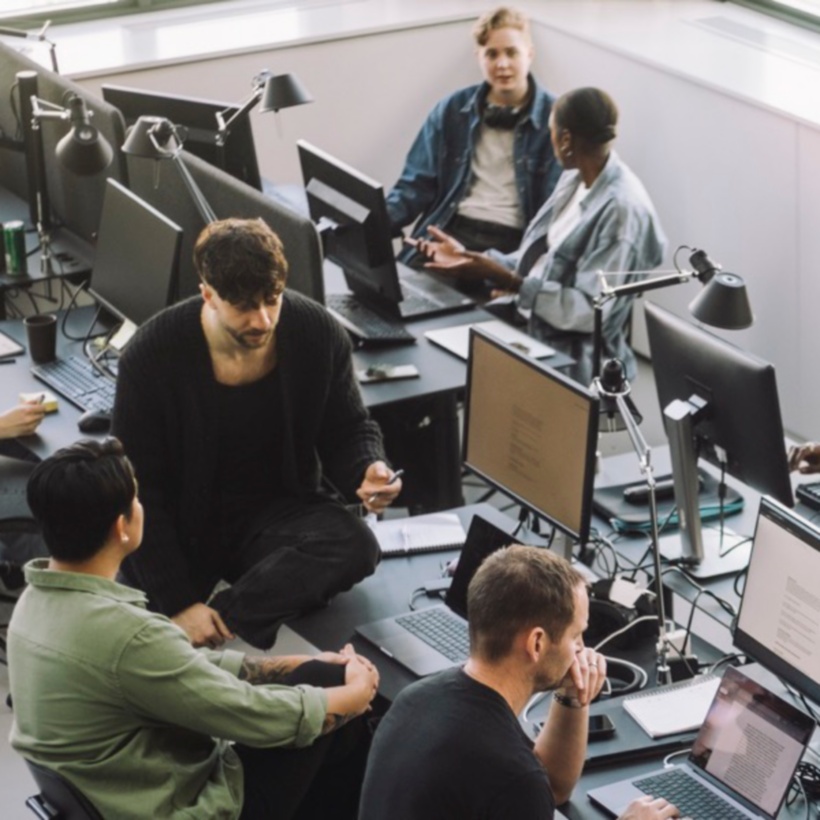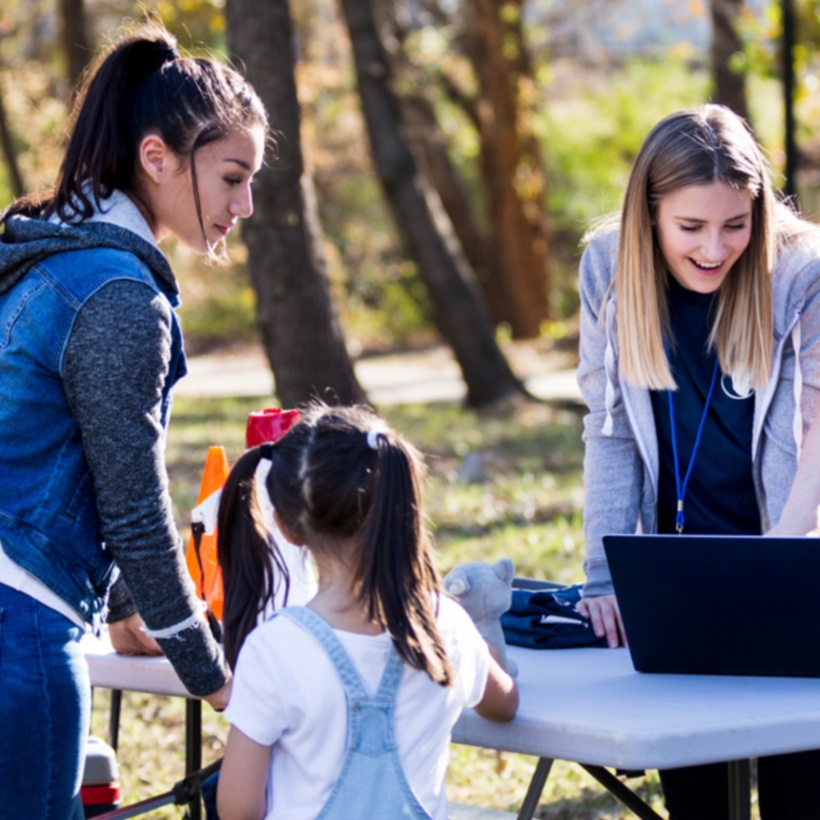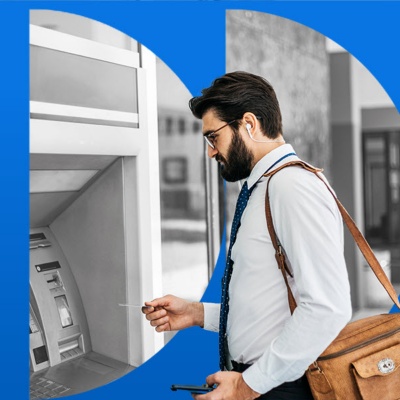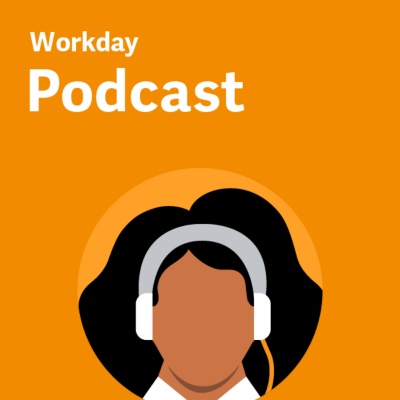Michelle Adams O'Regan:
Hello, everyone, and welcome to our session, Human-Centered Technology for Nonprofit Success. I'm your host, Michelle Adams O'Regan. I'm the industry solution marketing lead for nonprofit here at Workday. And I'm so pleased to be joined today by Beth Kanter, internationally recognized thought leader in digital transformation and well-being in the nonprofit workplace.
Beth has over three decades of experience in designing and delivering training and capacity-building programs for nonprofits and foundations. And she's also the author of many research papers and books, including, most recently, The Smart Nonprofit: Staying Human-Centered in an Automated World, which examines the impact of automation and AI for nonprofits.
We know the world has changed so much and so rapidly over the past few years alone, and the role of technology and the need for digital transformation is at the forefront for so many nonprofits, more urgently than ever before. So today, in our podcast, we'll explore what nonprofit leaders can do to keep pace with trends and how they can leverage the right technology and digital strategies to drive mission impact.
So with that, let's start the conversation. Welcome, Beth. Before we dive in too deeply, could you tell us a little bit about yourself, your background, and your work?
Beth Kanter:
Sure. So, Michelle, thank you so much for inviting me onto the podcast. I'm really delighted to be here. And so I've worked in the nonprofit sector for almost four decades, but I wasn't trained to be a nonprofit administrator like most of us in the field, especially in the beginning. I was trained as a classical musician, flute, actually, but decided that my talents were better used backstage. So I worked as an arts administrator for nonprofit arts organizations, beginning with the Boston Symphony, where I got-- I think I got my master's degree in fundraising by learning every aspect in the fundraising department in those days, and it was a lot smaller back then. And then I spread my wings and I became an executive director of a small midsize chamber orchestra called Pro Arte, where I pioneered a program in Boston called Access to the Best Music that made-- opening up the concert hall to people with disabilities. And from there, I worked mostly as a consultant, specializing with small and midsized organizations and eventually being an evaluator for the National Endowment for the Arts, which was great because I got to go all over the country and learn about capacity building and arts organizations and write the evaluation reports.
And then, somewhere around the late '80s, the early '90s, I discovered the internet. I didn't invent it like Al Gore, but I got a job with the New York Foundation for the Arts for its program called Arts Wire. And this was early '90s, right, '91, '92, so it was super early. And it was an online network for artists and arts organizations, and I was the network coordinator trainer. So in those days, I was helping scores of artists and arts organizations set up their modems, learn how to use email, give up the fax machine, [laughter] right, create websites, and all of that. So along the way - and I did that for over 10 years - I sort of had a front-row seat at the creation of the nonprofit technology field, which was helping organizations, nonprofits, adopt technology in a mission-driven way. So I became an early adopter of Web 2.0. I was the first nonprofit blogger. Actually, my blog, Beth's Blog, is 20 years old, in those early days where people were saying, "What's a blog?"
And I went on to-- I actually moved from Boston to the West Coast when I was invited to be a visiting scholar at the Packard Foundation here in Silicon Valley. I was there from 2009 to 2013, and that's where I wrote my first two books, the first one, Networked Nonprofit with Allison Fine, and then about measuring networks with Katie Paine. And from there, I just became immersed in nonprofit tech, and I broadened my horizons from just arts organizations to every type of nonprofit. And because of my early immersion in tech, I kind of experienced screen and tech burnout. I was like the canary in a coal mine, if you will. And that's where I turned my attention to workplace well-being. And that led to the writing of The Happy, Healthy Nonprofit. And then in the last seven years, I've been focusing on AI because I sort of have always been looking at the intersection of emerging technology and nonprofit-mission-driven work, but always as a trainer and a capacity builder.
Michelle Adams O'Regan:
Wow. That's some amazing stuff, Beth. So actually, let's talk about that intersection. Let's talk about the nonprofit marketplace first. So we have a recent Workday study where 51% of nonprofits said there's a gap between where they are and where they need to be in terms of digital maturity and technology to aid their operations. And that being said, we know that nonprofits often operate on that, "Do more with less," principle. That can lead to the sort of unwillingness or the inability to invest in technology, even though it can have a significant impact. So can you talk a bit more about that, about your research and your work in that area, about how nonprofits are adopting or not adopting digital technologies, right, and what you've seen on this? Love to hear more.
Beth Kanter:
Sure. So I've been through a number of waves of disruptive technology. So I've had the benefit of maybe the ability to see a pattern that emerges, and it's pretty much a predictable pattern, whether it was a personal computer or websites, email, mobile phones, social media, and now this automation and technologies and AI. So the predictable cycle is often an innovation trigger. There's something new, or it comes to the point where it comes to attention to people. It captures people's attention. The hype follows. I think Gartner calls it the peak of inflated expectations. And then people become disillusioned with it. It's called the trough of disillusionment. So imagine it going down into that valley. And then, slowly, we get to an enlightenment, and the technology becomes more adopted. It becomes standard. You wouldn't think of not having this particular technology. It, in a sense, becomes boring. And I've seen that happen, and it usually takes a couple of years for that to go through its cycle.
And what I've been seeing early-- it's in the early days, I think, of adoption of AI. I've seen a binary approach. I see nonprofits either dismissing the technology as cataclysmically dangerous, or they dive head first into it with this false notion that it can solve all their problems, and those are generally people problems. But I think neither one of those directions is helpful. We can't ignore AI or, say, be scared of it, put our heads in the sand. And we can't just rush right into it because of some of the limitations and challenges with the tech, which I'm sure we'll get into in a bit. So I think organizations should really not try to stop their staff from using it or cry or bemoan that the killer robots are here. I don't think they are. And I don't think they can afford to just ignore it and say, "I will not use AI," because it's going to be here. It's going to be embedded more so in everything. But to proceed with being knowledgeable, reflective, human-centered, have clear guidelines and education. And I really urge all nonprofits that may be listening to this to take a moment right now and create a framework for really smart and ethical use of AI and not treat it as this sort of checking-a-box activity, but thinking about it as an ongoing process of exploration, experimentation, and growth over the next couple of years.
Michelle Adams O'Regan:
Yeah. No, that's fantastic advice. And so as you mentioned, it's about the people, right? So let's talk a little bit about some of the benefits. In the Smart Nonprofit, one of the phrases that you use that is truly fantastic is the dividend of time. And I'm just going to read this quote just to illustrate. "So nonprofits operate on shoestring budgets with limited staffing. Why tie up valuable staff time doing repetitive, boring, soul-sucking, time-consuming, administrative tasks when available smart tech tools can do the work of 10 interns? Smart tech in the back office is bound to return a huge dividend of time to nonprofits." So talk to us about that concept and why it is so critically important for nonprofit organizations above all to understand and to act on that as they consider all of their digital systems and strategies.
Beth Kanter:
Absolutely, Michelle. So I mean, this technology is different. It's not like social media or even email that actually caused more overload. But this will actually help us save us time because of the automation and its, well, smart abilities, if you will. So smart tech, when we use the term as a bucket phrase, a basket phrase to describe all types of AI and automation technologies, all their subsets, cousins, uncles, aunts, from generative AI, chatbots, chat, GPT, etc. And basically, all of this technology - and I'm going to simplify it really well - it analyzes large patterns of data and uses algorithms - I like to call them recipes or just simple mathematical or not-so-simple mathematical equations - that allows it to automate different tasks or make decisions. And the difference is, it's doing it for people versus people doing it, right? And it's able to do tasks and decisions that used to only be done by humans in the past. And I'm not saying that it's a killer robot or anything, but that's why we call it smart technology. And it's not new. It's been around, and it's here, right? And we may not know it, but we're probably already using it. It's like the refrigerator humming in the background, whether we're going to decide what we're going to watch on Netflix or what we might buy on Amazon or what ads we see on social media sites or on the web.
And so with the launch of ChatGPT or generative AI, what's different is that not only can it do this grunt work, right, like cut and paste information from one form to another - I call that spreadsheet aerobics - but it can start to mimic human intelligence. It's not human, but it can do things like writing or coordination. And so this is what is going to have a real dramatic impact on our work, as you mentioned. I think a good piece of work in nonprofits is this grunt work, right? We didn't come into the field to cut and paste information from one form to another. We came here because we have a passion about making the world a better place. So this opens up, as you described it, the dividend of time. But we don't want people just to work faster and to do more of the same and to overwork, but we want people to leverage that space, right, to really focus on human things that we do so well, like relationship-building. For example, we could start to tackle things like the lapsed donor rates, right, which are horrible. But if we freed up all of that grunt work, we could actually get on the phone and talk to donors. We could think about better cultivation strategies.
If ChatGPT can write that first draft of a donor thank-you letter, that frees up more time for us to be more creative in our work. And that's not a technical challenge. It has nothing to do with the technology. It is really a leadership challenge to really think about how can we shift the way we're working. I gave you an example with the donors, but also, in nonprofits, because we do more with less, we're always working. And there are exorbitant rates of burnout. Even before the pandemic, it was high, and the pandemic really supersized it. And so if we're able to use this technology in a way that improves the job experience, helps us reconnect on why we got into the job in the first place, then that opens up our ability to be more innovative, to be more creative, to do more planning, maybe even to have something like a four-day work week, and maybe not burnout; maybe retain staff. But again, it's not just push a button and the technology will do it. It takes human leadership to start to make these changes.
Michelle Adams O'Regan:
Absolutely. And that opening up of that space for innovation and for strategy-- I think there's another quote, I think, from the Harvard Business School article that you guys did about opening up, "Getting past the era of frantic busyness to think and even dream," that's the space that really will allow nonprofits to have a greater impact when they can take that time, when they have that dividend of time that that technology can open up. So I want to push a little bit more on that concept of burnout. And one of the biggest challenges that nonprofits are facing right now is retaining people. And we know that the people who work for nonprofits are dedicated and mission-oriented, and many of them go above and beyond every single day, as you said. But we really want to be able to keep people, reduce burnout, make their working lives easier, and technology can really do that. I mean, I worked in development for a nonprofit association earlier in my career, and no joke, I was out in the field doing membership work about 70% of the time. The rest of my time, I was doing manual expense reports.
Beth Kanter:
Spreadsheet aerobics, right?
Michelle Adams O'Regan:
Yeah, exactly. Spreadsheet aerobics. So can we talk a little bit more about that, how kind of cloud platforms, automation, all of these things can help nonprofits keep their people, and the benefit that that really brings to their mission?
Beth Kanter:
Well, I want to say that it's not the technology alone, right? Because you could introduce these technologies, but if we don't start to make some changes in our work norms, like leaving the office at 5 o'clock, or maybe changing our work weeks, or not scheduling back-to-back to back-to-back meetings-- I mean, the efficiencies will just allow us to do more work faster, right? So we really--structurally have to make some changes in the way that we work, alongside of adopting and introducing these technologies. So there's a couple things. Making it a great work experience, right? It's part of the culture, but it's also part of the job. And right now, I think there's a lot of fear and hype around the robots are going to kill our jobs. They're going to eat up all our jobs, and we're going to lose our jobs. So I think that all leaders, and especially nonprofit leaders, they need to approach this that it's not a job killer, but that it's to augment people's jobs, all right? It's not a cheap replacement for staff, right? Leaders cannot think about this technology as a cheap replacement for staff. They really must think about how it can improve the job experience, really, how they can leverage that dividend of time, and that takes having some honest conversations and maybe even taking a pledge that they're not going to lay people off if they're going to use the new technology.
Beth Kanter:
And in the book, one of our favorite terms is co-botting. And basically, that's about letting the technology do what it does best and then let humans do what humans do best, and humans working alongside of the technology, and humans always being in charge. And so that takes some thought in terms of, how does the workflow change, and where are the points that we should be using this technology? And then also, how does that reimagine that job, right? I'd like to tell nonprofit leaders that this is not-- you're not going to use AI and then fire your fundraising staff. The robots are not going to take prospects out to lunch, right? But to think of it more as free administrative assistance for everybody. Who wouldn't want that, that you don't have to pay for, right? So it's this co-botting idea. It's not a cheap replacement for staff, and to really think about improving the job experience.
Michelle Adams O'Regan:
So let's talk a little bit more about that. We did a Workday survey of about 1,000 business decision-makers from all over the world, and it revealed that 73% of them feel under pressure to increase their adoption or their investments in AI and ML. And we know there's a lot of value, as we just discussed, but considering how best to actualize that, and you've touched on this already, but you said what you would say to nonprofit leaders. What have you been hearing from them? Are you hearing fears from people? Are you hearing excitement from people? Are you hearing pressure from them?
Beth Kanter:
I hear all of that. I think, with every technology, we've heard this, "You're going to get left behind." And I think that all that does is inspire people to rush ahead and not be as thoughtful. And people really need to be more thoughtful with this technology. So a couple of things. I think it's really important to spend the time to be knowledgeable and understand what the technology can and can't do. I mean, with social media, we're jump into the water, experiment, fail fast. I don't think we can do that with this technology because of the potential for harm. So first of all, we have to increase our AI literacy. I'm not asking CEOs to learn how to code. That's usually the reaction I get. "Oh, I have to code?" No, but you need to understand what data has this software been trained on, how does it work, what is a good use case, for example. And when thinking about use cases, we have to-- I love this line. It came from one of our interviews with the data scientist from GlobalGiving, Nick. And he said, "AI is hot sauce, not ketchup. You can't just use it for everything." And in conversations that I've had with some nonprofits, I hear them come up with these really kind of unusual use cases, and I stop and say, "AI would not be good at doing that," right? Or starting with a question, "How could I use AI to help my board become more equitable or more diverse?" and I said, "Well, I don't know if the tool can do that."
Beth Kanter:
So it's really understanding what that tool can really do for you and what the use case is. And then it's not going to be across the board for everything. And it takes time to identify the right use case. And we always recommend beginning with finding that exquisite pain point where there's a bottleneck or things that are stopping other things from happening or where it's just exhausting to cut and paste from one spreadsheet to another and it's taking all this time. Like your example of 30% of your time doing expense reports, that could be an exquisite pain point, and start there. Don't try to do everything, but zero in on that. And the other thing we also need to think about too is, as adoption is happening, there's going to be a need for reskilling.
Beth Kanter:
So it may be that-- let's just take ChatGPT, and maybe there's a good part of your job that's writing, and maybe this tool can really help you be more productive in your writing, whether it's to use it sparingly to edit, or to brainstorm, or to cut the word count, or whatever. We'll free up time, but maybe you may be doing other types of tasks that you need some skilling for and training around, right? And I think it's also going to be important, as our world becomes more automated, that we really honor and we build and we augment human-based skills like communication, collaboration, empathy, for example, creativity, and that we really try to amplify those as well.
Michelle Adams O'Regan:
Oh, so important. And that's sort of a responsibility, and staying human-centered and using with empathy is a question I want to talk a little bit more about, too. You mentioned the board member saying, "Can it make our board more diverse?" And we know that the tool can't do that, but we also know there are potential dangers with bias and various things with AI. And so that same Workday survey that I mentioned before, 9 out of 10 decision-makers agreed that it's important for a human to assist AI or ML when making significant decisions, like your board, rather than allowing the technologies to do it alone. But only 29% of them said they are very confident that AI and ML are being currently applied ethically in business. So there's a lot of kind of data and sentiments about this, and I'd love to hear your thoughts as well.
Beth Kanter:
So I think, if nonprofit leaders and nonprofits are going to adopt this technology, and they should, they should really lean into it with their values. And one of the beginning steps, of course, is to have your ethical use policy and a do-no-harm pledge. So that first thing, and I know we've mentioned this before, is that it's not a cheap replacement for staff. And I'll tell you a story recently. It was our greatest fear. What is the worst thing that could happen while we were writing this book? The National Association of Eating Disorders - I don't know if you read about this - the staff on the hotline were really overwhelmed with so many requests because of the pandemic, and they went to management and said, "We need to hire more staff or we might unionize." And so what happened is that senior management brought in a chatbot and gave the staff some pink slips, and the bot wasn't tested enough, and it was dispensing potentially harmful advice, and it was taken offline, right?
Michelle Adams O'Regan:
Awful.
Beth Kanter:
And if they had just led with their values - or maybe they didn't have any; who knows - and really thought about, is this the right use case, and tested it, and understood how the bot could go off the rails-- and there's other examples of this. And to go more carefully, right? There's also safe use of data. We all gave our data away to social media companies a decade ago, and we shouldn't make that same mistake now. So I think that, as a sector, we can and we should raise the bar on safe and ethical use of data. So for example, are you only using data sources that have been approved by the content developers? If you're using ChatGPT, there's been an increase of lawsuits for intellectual property, for example. Is the tool using written materials by authors who consented to being in the dataset? Is it using scientific data, but it's balanced, right, so that the recommendations it might be giving back are balanced and accurate? Is there bias in the data? And all data has bias. Are people being left out, right? Are you locking black and brown people out of your services because of the way the algorithm is constructed? And we also have to really understand about privacy and opportunities to be forgotten, as the European Union recommends.
So there's that, and then there's the mitigation of risks and bias as well. And there's a term in the cybersecurity field. It's kind of scary. It's called threat modeling, right? Alice and I debated about using that term because we thought it might be too scary, but let's use it. And threat modeling basically is just having a brainstorm about what could possibly go wrong and making adjustments to the design in your project or the particular use case as a result of that. And often, that takes testing with potential end users before just unleashing it at scale. So it's not just like, "Hey, here's our AI ethical use policy." You cut and paste it off from some document you've read on the web. You really need to think through these issues internally before you even get your hands on a project. And then once you begin to think about the use cases, co-botting, that exquisite pain point, that it's carefully done with a lot of safeguards along the way.
Michelle Adams O'Regan:
Really important to think through those issues of privacy, security, ethical use, absolutely, so great guidance. So I want to kind of finish this up here with a couple of real broad questions, big-picture questions. What advice would you give to nonprofit organizations starting out on their journey to digital transformation and digital maturity? Because there are so many organizations that are kind of just starting along the road here, and in so many ways, whether it's adopting a digital strategy for their CMS, or an ERP like Workday so that they can manage their people and their finances, whatever it is. What advice would you give folks just kind of starting out?
Beth Kanter:
Well, this is probably more specific to AI, but I think it's applicable to everything. So you can't hide in the sand from it and ignore it, and you can't rush into it. You have to take that middle approach, which is thoughtful, go slowly, reflectively, and be knowledge. And I think, whatever the technology is, that the first step is really building your knowledge base around it. You don't have to learn how to code. You don't need to know the technical stuff, but you need to know, what are examples of good use cases? What are the things we should be aware of? Do some of that threat modeling, all of that stuff. So that's really important to become knowledgeable first before you begin to act. And in our book, we have a whole section. I think it's chapter seven. It's called Ready, Set, Go. And I know this is sort of opposite of the way a lot of nonprofits like to work because they want to-- "We have limited resources. We've got to go. We've got to find the quick thing, the quick tip, the thing that's not going to cost a lot of money and move fast." We can't do that.
Beth Kanter:
So we have to spend a lot of time getting ready, and that's the exquisite pain point, the co-botting workflow, the threat modeling piece. The set part is about understanding what our ethical use is, understanding what our privacy-- the privacy concerns, and potentially doing no harm. It's being really thoughtful about vendor selection. Does this vendor that we're going to use-- do they align with our organization's values, right? And asking them questions, pushing against that black box, right? It's proprietary code, but can you tell us, generally, what dataset was used to train it, and what are some of the limitations? And if you don't get good answers, then you probably don't want to work with them. And you also have to get really good at understanding how it's embedded into third-party applications, which are things like standard applications that we're all using anyway, and what are some of the issues there? And then when you're ready with a use case, it's piloting it on a small scale, testing it before it's unleashed to the public or put on the front lines so that it's not doing any harm to your end users, whether they be donors, stakeholders, clients, or your staff. And then I think also, with any technology, it's not a pot roast. It's not set it and forget it. It requires that ongoing monitoring and updating and–
Michelle Adams O'Regan:
Care and feeding.
Beth Kanter:
And care and feeding. Right. So that's generally the advice on how to approach. And have a lot of patience.
Michelle Adams O'Regan:
One of the things we often say at Workday is that a digital transformation is a journey, not a destination, that adopting that mindset of that care and feeding, that you're not just going to adopt a technology and it's going to fix everything, but that you're going to be on a journey of both cultural and technological change together that are hopefully going to take your organization to a more innovative place that changes the way you work and changes the experiences that your people are having. So really fantastic advice on that front. So okay. Finally, another big question. Looking ahead with your crystal ball, right, where do you see the nonprofit sector overall in the next few years? What are you most excited about? What challenges do you see on the horizon?
Beth Kanter:
So I think that, right now, as it relates to AI, we're in the inflated expectations about-- to be at that trough of disillusionment. And I think we still need to prepare ourselves for adoption. And it's not going to happen-- even though the numbers that you see-- we're in that hockey stick, [laughter] double exponential growth. It's going to take a while before it's fully adopted in nonprofit organizations. It's going to take, I think, another couple of years before it becomes boring, as Clay Shirky likes to say, [laughter] "When the technology becomes boring, that's when it's become full adoption." And we haven't reached that phase yet. And I think it can really help nonprofits reinvent their next chapter of nonprofit work, whether it's programs, whether it's fundraising, marketing, or whether it is internally. But we're going to be thinking a lot about the challenges. They're going to be about reskilling, workplace learning, job work design, and these are things that I don't think a lot of nonprofits are used to doing because-- so that we're going to move a little bit faster with, and that's change, and people are always a little bit uncomfortable with change. And so I'll end with a little-- I'll bring it back to my musical training. When I was a stunning flute, I had a chance to play Beethoven's Third Symphony, which has a flute solo in it. And in rehearsal, I missed the entrance, right? I was a beat late, and the conductor taps the stand, and he pointed to me, and he said, "Coraggio," which is Italian for courage. I have to end with the question: this has this great potential to help us reinvent nonprofits and the way we do our work and ultimately, the impact we have in making the world a better place, but do we have the courage to change, to take those first steps?
Michelle Adams O'Regan:
That's the question, right?
Beth Kanter:
Yes.
Michelle Adams O'Regan:
I hope the answer is yes. We hope the answer is yes. So thank you so much, Beth. Really, this has been wonderful for sharing your insights with the audience today. So many great takeaways on the way smart technology and the smart use of technology can benefit nonprofits and their missions. We are truly honored here at Workday with our nonprofit customers who are doing world-changing work every day. So to all of you, have a great Workday.






